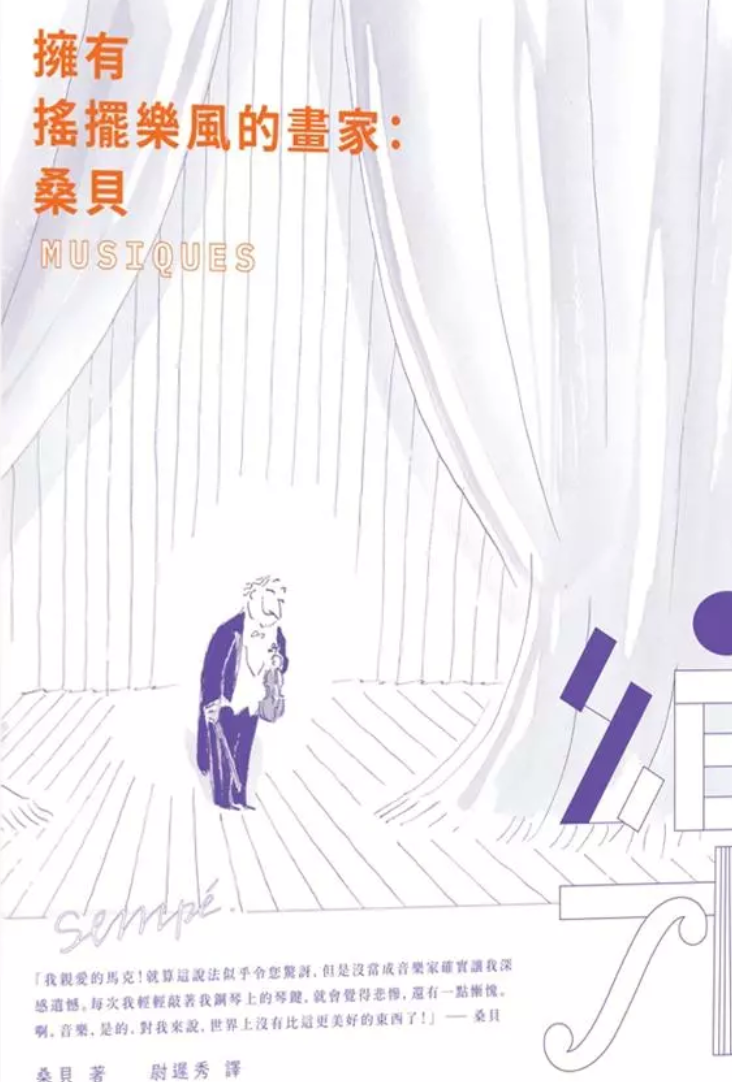1
/
of
1
Painter with Swing: Sambe
Painter with Swing: Sambe
Regular price
MOP$153.00
Regular price
Sale price
MOP$153.00
Unit price
/
per
Couldn't load pickup availability
Sambei turned the lines of painting into music. --"New York Times"
Sambei was a genius with a sense of humor. He painted humorous and elegant music playing that looked serious, which was a priceless gift to musicians. --The famous conductor Leonard. Leonard Bernstein
Sambei was a genius with a sense of humor. He painted humorous and elegant music playing that looked serious, which was a priceless gift to musicians. --The famous conductor Leonard. Leonard Bernstein
"Childhood" tells the story of the carefree childhood, and "Sincere Friendship" elaborates on interpersonal relationships with a delicate and emotional look. This time, Sangbei is here to celebrate music and musicians. In his conversation with Marc LeCharpentier, Sambey revealed his passion for jazz, his love for Achille-Claude Debussy, and his love for the band Ray Ventura. Worship, these people "saved his life."
He is a humorous painter who dreams of becoming a pianist. In the book, he recounts how he got along with Duke Ellington, Maurice Ravel, Debussy, and Erik Satie. The imaginary dinner party; how moved he was when he first listened to the record in a Bordeaux shop; his love for Paul Misraki or Charles Trenet never ran out because of their The song "touches grace, before lightness looms".
Through these unpublished paintings, Sambei pays homage to professional and amateur musicians, children learning music, and inspiring adults.
Should we rejoice or sigh about our life choices? Everyone obviously has their own ideas. But Jean-Jacques Sambet, who had signed thousands of paintings, said without hesitation that he would rather be a musician, and all the signs make people believe it. Ever since that night when he eavesdropped on his parents' radio and heard Paul Misraki on the radio, ever since he had been "crazy and stupefied" obsessed with Debussy's "Clair de Lune". lune), ever since he became Duke Ellington's "crazy lover", ever since he managed to play Gershwin's "I Love You" on the piano at the boy's home where he went every week in Bordeaux. After "The Man I Love", the teenager began to dream about his life, imagining that he could one day join Ray Ventura's band.
The family environment left him with no choice, so he tried to publish humorous paintings in Paris newspapers and periodicals. Later, he finally published a picture book and also worked for the famous "New Yorker" magazine. "We are always distracted when choosing a career, unable to embrace our work as our grandfather embraced it," sings André Hornez.
Success doesn't take away passion. As in the past, Jean-Jacques Sambet remained loyal to the people who "saved his life": Duke Ellington, Debussy, Ravel, and he was also happy to admit that he was loyal to Charles Tenet, Paul A favorite of Mishaki, Mireille or Michel Legrand.
If any readers are confused, why is the direction of the selection of pictures in this book so arbitrary and unshakable? As you will see, these unpublished drawings make clear the profound relationship between Sambé's talent and the music he loved. Everywhere in the book, admiration pulls the lines of the painting, lightness comes in a sweet way, and joy subdues despair. Fantasy and dreams are waiting at the front.
Should we rejoice at Sangbei’s artistic path, or sigh? Cartoonist Steinberg liked to say that he was "a writer who draws pictures." Please allow me to answer this: Sambei, he may be said to be "a musician who draws pictures", a painter with a swing style.


